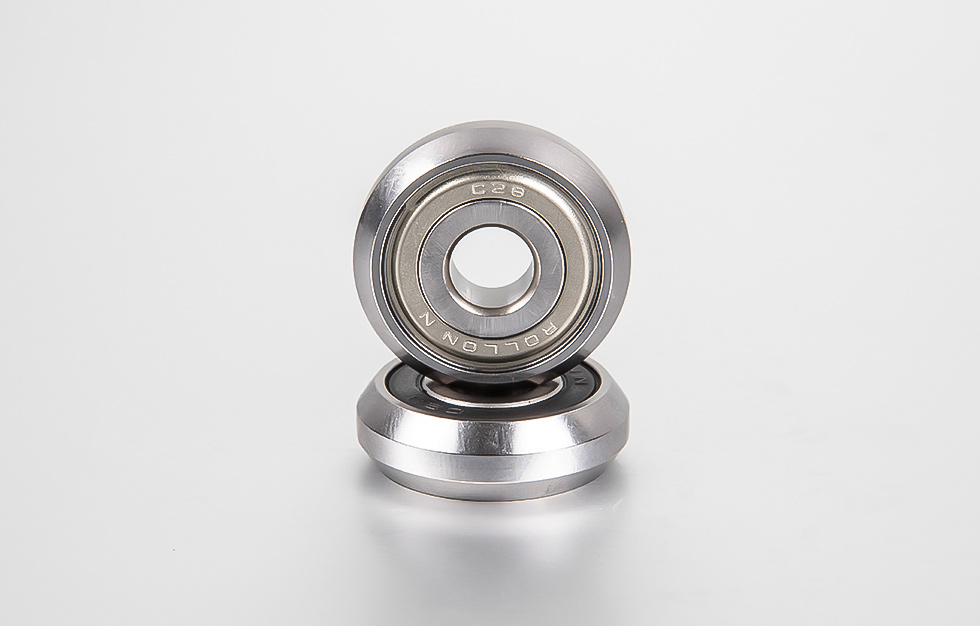News
Ningbo Hardchn bearing Co., Ltd.
Contact Us
Ningbo Hardchn bearing Co., Ltd.
ADD:No.501 Shizhu Rd, Linyu Foreign Investment Park, Jiaochuan Street, Zhenhai District, Ningbo city, China.
Tel:0086-574-86365365
Mobile:0086-(0)13858288142
Fax:0086-574-86454078
The deterioration of rolling bearings is not a linear p […]
The deterioration of rolling bearings is not a linear process, but an exponential process. In different degradation stages, the fault information appears in different frequency bands, so different fault detection methods must be adopted. At present, the industry generally believes that the degradation process of rolling bearings can be divided into four stages.
Stage 1-Early Bearing Failure
At this stage, the bearing first forms microscopic cracks or lattice dislocations on the subsurface, while no cracks or micro-flaking are seen on the bearing surface, and no obvious shock signal will be formed in the low frequency range of the vibration signal. Traditional acceleration sensors cannot be used. The fault signal is picked up, but the microscopic cracks on the subsurface or the dislocation of the crystal lattice will produce acoustic emission signals or stress wave signals. Therefore, the fault characteristics of the bearing at this stage are mainly reflected in the ultrasonic frequency range, which can be picked up by acoustic emission sensors or resonance-based acceleration sensors, which is mainly manifested as the measured signal peak value or energy value becomes larger.
Stage 2-bearing failure development period
At this stage, the micro-deterioration of the bearing begins to expand from the subsurface to the surface, and damage points such as cracks or micro-flakes are generated on the contact surface of the bearing. When the surface of the bearing element contacts these damage points, a shock pulse of a certain frequency will be formed. According to the Fourier transform, the short-term shock signal is a broadband signal in the frequency domain, so this shock signal will inevitably arouse the bearing The high-frequency natural frequency of the components resonates, so that the vibration is strengthened. This part of the signal can be picked up by the acceleration sensor, and then the characteristic frequency of the bearing fault can be observed using the envelope demodulation technology. At the end of the second stage The frequency multiplication of the fault characteristic frequency can also be observed.

At this stage, the fault characteristic frequency of the bearing is temporarily submerged in the higher noise of the low frequency band, so no clear fault characteristic frequency can be observed in the fault characteristic frequency range.
Stage 3-the rapid development of bearing failure
At this stage, with the accelerated development of bearing damage, the impact of the damage point on the bearing contact surface becomes more and more intense. The frequency multiplier of the characteristic frequency of the bearing fault demodulated in the resonance frequency band is increasing, and its periodic impact The energy level of is enough to be directly observed through the power spectrum of the vibration signal. At this time, the fault characteristic frequency of the bearing can be clearly seen directly on the power spectrum of the vibration signal, and its frequency doubling has an increasing trend.
Stage 4-End of Bearing Failure
At this stage, the rolling bearing has almost reached the end of its life, the damage point can be observed with the naked eye, the noise of the bearing movement has become particularly loud, and the temperature has risen rapidly. At this time, not only the fault characteristic frequency of the bearing and its multiplication frequency can be clearly seen on the direct power spectrum, if the damage point alternately enters the load area, you can also see obvious modulation side frequencies beside the fault characteristic frequency. At the end of the fourth stage, the spectral lines on the spectrum become not very clear, and a protruding "thatch" will form on the power spectrum. In addition, the energy of high-frequency vibration may not rise but fall at this time. If it is found to be high The frequency of monitoring began to decrease, not because the surface bearing condition got better, but because the bearing has reached the end of its life.